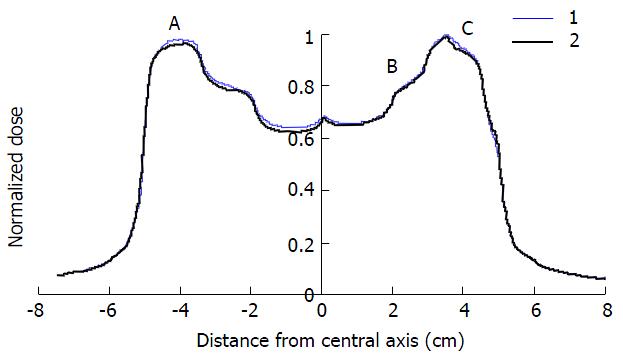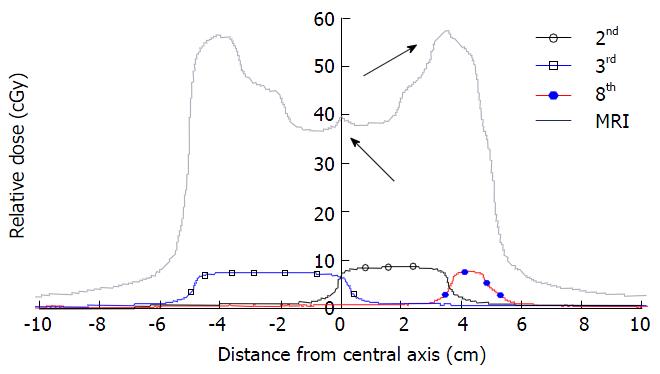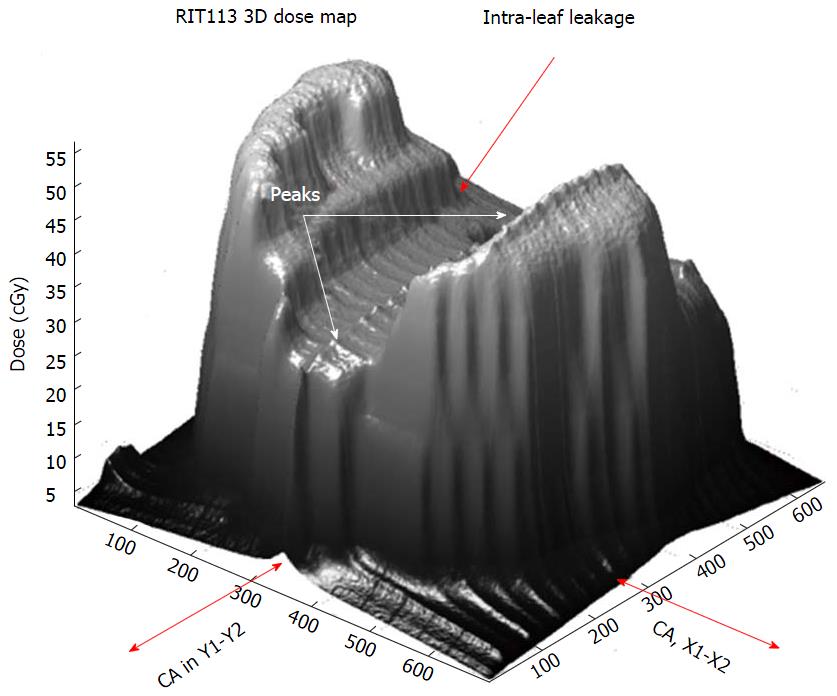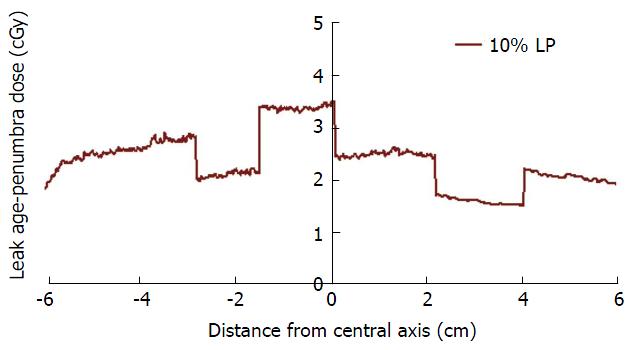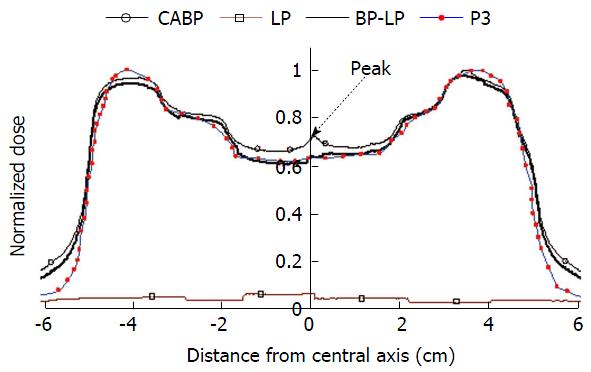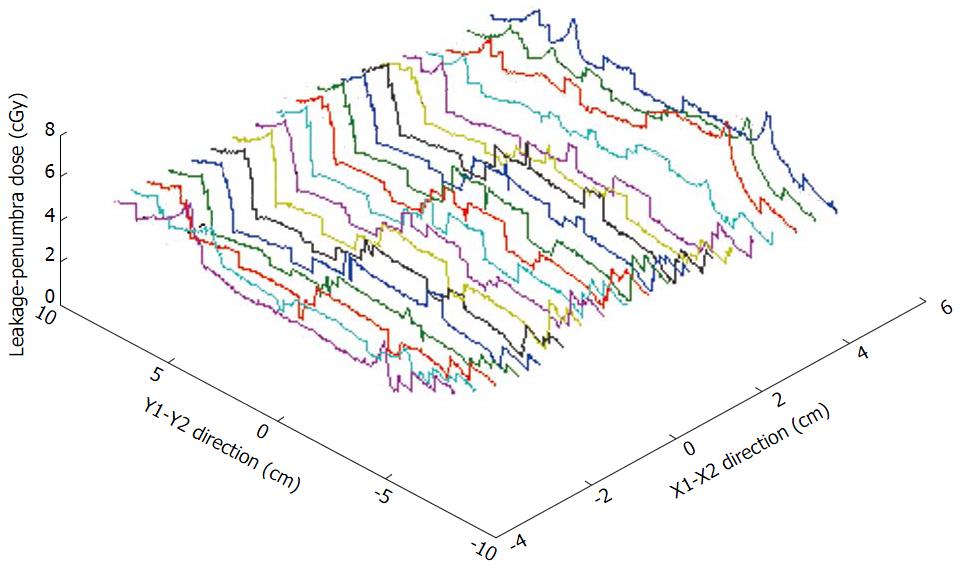Copyright
©The Author(s) 2016.
Figure 1 Segment sequence, dose distribution and segment profiles of an anterior-posterior intensity modulated radiation therapy beam.
A: The shapes of the beam segments; B: The dose distribution caused by the segment sequence; C: The beam and segment beam profiles. BP: Beam profile.
Figure 2 A comparison between beam profile for a beam affected by the overshoot effect of the biggest segment in the sequence (thin curve), and a beam with smaller segment (bold curve) on the first position in the segment sequence.
A, B and C are the dosimetric points of dose delivery.
Figure 3 Penumbra errors caused by the neighbouring segments.
MRI: Magnetic resonance imaging.
Figure 4 Three-dimensional dose distribution of the beam from Figure 1.
3D: 3-dimensional; CA: Central Axis.
Figure 5 A comparison between the beam profiles from Pinnacle3, static (reference) and intensity modulated radiation therapy beams.
P3: Pinnacle3.
Figure 6 A corrected leakage-penumbra profile from the isocenter of the beam, as shown in Figure 1.
LP: Leakage-penumbra.
Figure 7 Corrected dose profile (beam profile-leakage penumbra) vs original delivered profile (central axis beam profile).
LP: Leakage-penumbra; P3: Pinnacle3.
Figure 8 Three-dimensional dose distribution of the leakage-penumbra extracted from the beam in Figure 1.
Math 1 Math(A1).
- Citation: Grigorov GN, Chow JC. Leakage-Penumbra effect in intensity modulated radiation therapy step-and-shoot dose delivery. World J Radiol 2016; 8(1): 73-81
- URL: https://www.wjgnet.com/1949-8470/full/v8/i1/73.htm
- DOI: https://dx.doi.org/10.4329/wjr.v8.i1.73










